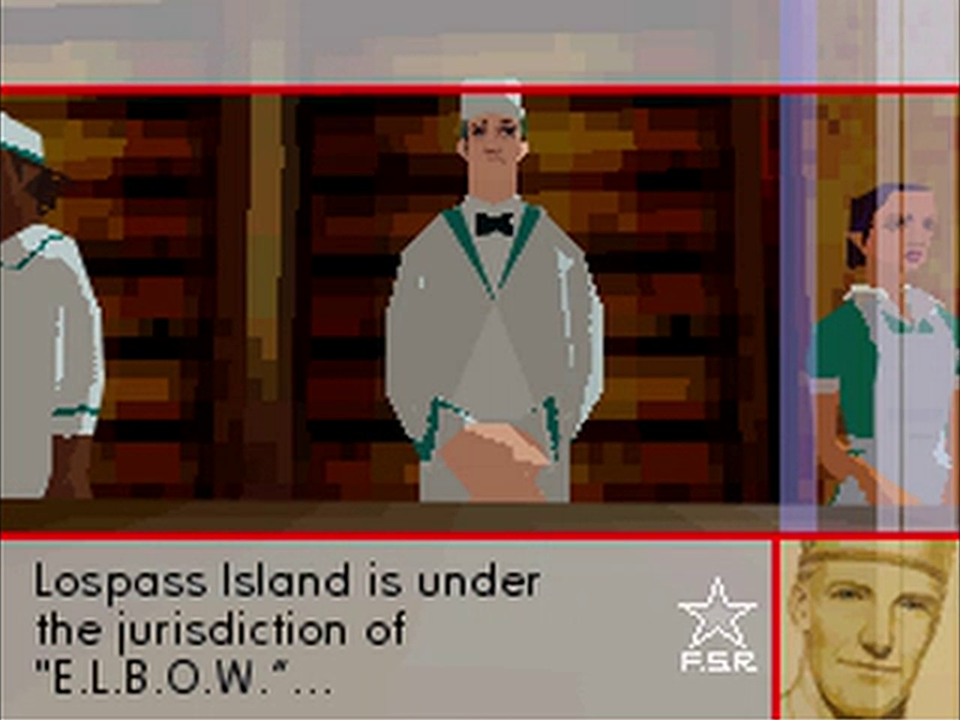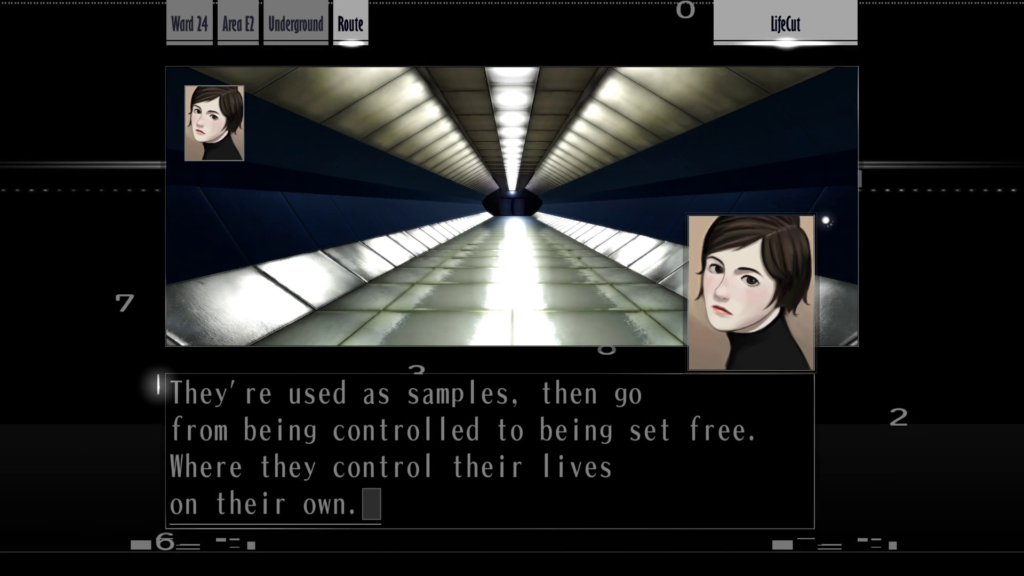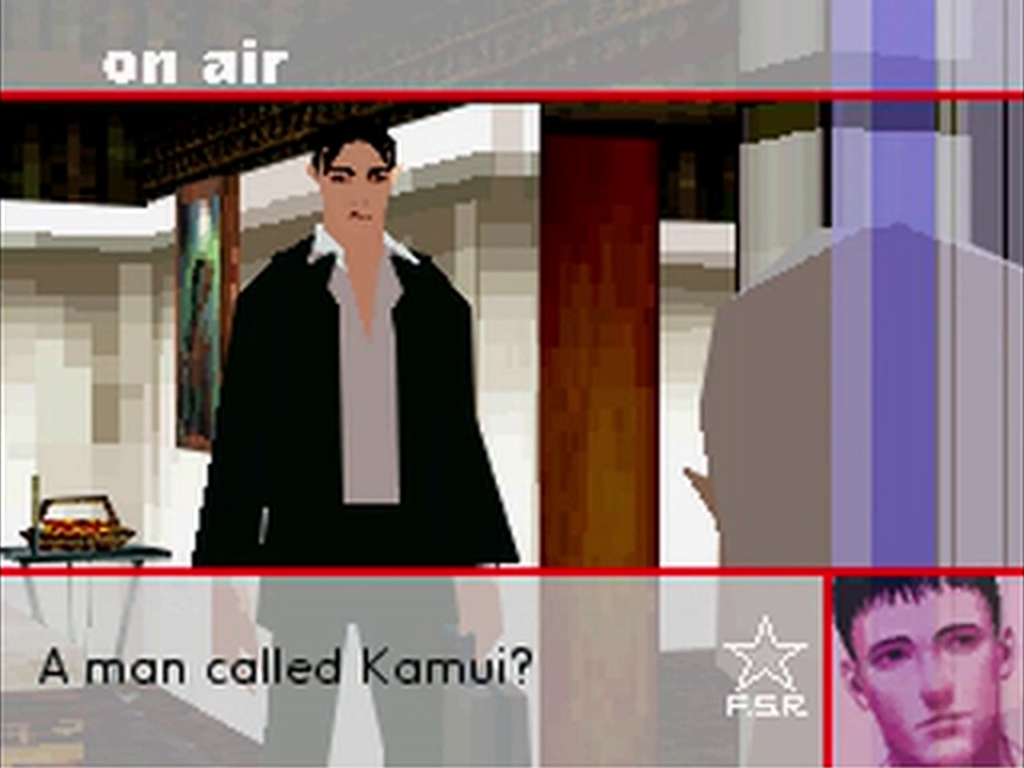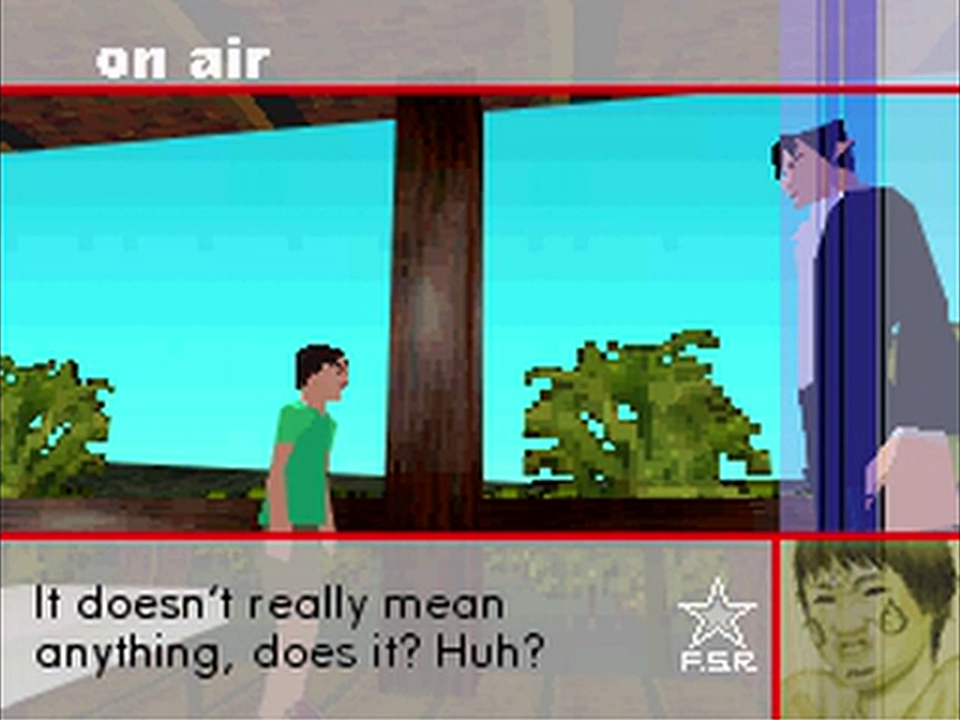
The Shelter Kids Policy, old men brainwashing their own children to be “faithful little pawns” to the former generation’s political will, occurs over the 1980s, the decade most associated with neoliberalism. Every other part of society was put up for sale, and in this project children’s bodies and future lives also become commodities “cut up and sold” to rich men. As neoliberalism went through test stages in the 1970s, so did the Shelter Kids: in “HIKARI,” Uminosuke indicates there were experiments with Shelter Kids before the oligarchs chose the Uehara Kamui personality in 1980. Where were these earlier Shelter Kids? Some of them may well have been in the shelters that appear in “Decoyman.” But as I elaborate on below, Flower, Sun, and Rain reveals the existence of the earlier Euro Maspro on a colonized island whose indigenous people Uminosuke almost wipes out in the process, alluding to real-world economic architects using countries outside the imperial core, such as Chile, as labs for their economic experiments. Sakura describes leaving the shelters as “[going] from being controlled to being set free. Where they control their lives on their own.” The brainwashed children, once free from the direct terror, assimilate into the ideology traumatically infused into them. They are products of a system, and even if many of them go on to do bad, they are doing so in response to the conditions of that system. But, phrased in this way, is it such an exaggeration of normal education?
The Triangle Towers where the Kamui and Ayame Maspros occur are beneath Nezu’s TTV Station building, the transmitter of information, of “truth.” Both Sakura and Kusabi refer to the TTV Tower as a symbol of power over the powerless. “The top of this shelter,” says Sakura, “is a TV tower. […] The ones with all the power created it as a symbol of control.” The oligarchs’ project of social control is linked to the broadcast and dissemination of “truth” that conceals the “facts.” The tower is the transmitter and Kamui/Ayame the receiver, both as the destructive Silver Case Kamui and as the defiant savior Kamui.
This is also the reason that, in “Smile,” the ELBOW project that brainwashes students and controls US elections operates out of a school, a place where children are taught “truth” instead of “facts.” Although the Education Ministry simply rigs the elections, by analogy, the broadcast of this “truth” brainwashes the American public into a belief in this false democracy. Important in the context of the spread of neoliberalism is that Travis states the Coburn Elementary School contains the history of the US, the birthplace of the ideology. The school’s original purpose, dating back to 1780, is “to specialize in educating individuals who would spread and cultivate capitalism” (emphasis mine). While the syndicates in the fiction do not literally use propaganda to “brainwash” the Maspro children, the proximity of the mind control operations to institutions that spread the narratives of power to conceal or misdirect “criminal information” suggests the metaphor.

As Nakategawa puts it in “Decoyman,” the Triangle Towers are “a miniature version of the world.” The ways that the Shelter Kids Policy does not succeed and dialectically leads to rebellion against ELBOW are no less part of this metaphor. “It’s a tragedy. To control life like that, making Kamui believe he has something to live for, when actually, there’s nothing.” This economic system has nothing for Kamui, for the potential of all people, whom it instead puts up for sale. The alleged freedom is only deception. The brainwashing and commodification of the Shelter Kids both suggests the violence and torture concomitant with the rise of neoliberalism and presents, in exaggerated analogy, the way that education into hegemonic ideology “brainwashes” the young, atomizes them, and exploits their labor for the moneyed classes.
Kamui’s politics are “Kill the past,” the opposite of conservatism. It is this bipartisan neoliberal consensus of wealth extraction and imperialism that Kamui rebels against. However, even this does not definitively mean Kamui is not an essentially conservative figure, or not a figure amenable to those politics. The far right often rejects neoliberalism, recognizing that the profit motive cannibalizes their agendas as well. And the language and imagery of brainwashing, online radicalization, and the fantastical, magical exploitation of children underground has very particular meanings in the current bizarre, more digital political landscape. For this reason, I am ultimately hesitant to fully accept Kamui/Ayame as the kind of symbol I have thus far taken it/them to be.
Another reason for this hesitation is the later depiction of Kamui/Ayame.
Chapter 4: Welcome to the New Millennium
The Kamui/Ayame we have analyzed so far comprises only one version of the character/narrative. Subsequent titles challenge and interact with my reading of Kamui/Ayame in The Silver Case, rejecting their predecessor as naïve or insufficient before eventually developing a more sympathetic perspective. These later video games are in dialogue with The Silver Case, but The Silver Case is not in dialogue with them. For this reason, I rarely considered them when analyzing the 1999 title. But the answer to what Kamui is changes so drastically that this analysis would be incomplete with touching on them.
As we will see, Kamui is no longer a liberating terrorist role Akira and Tokio can assume but an erasure of identity that false democracies force on citizens. The savior Kamui, it seems, is not the “facts” behind the “truth” but just another “truth.” There may not be any way to escape power, with even the small-scale revolutions that might seem to succeed only leading to failure or slavery.
Flower, Sun, and Rain – Deepening lore and neoliberal colonization

The 2001 sequel to The Silver Case and second-ever title from Grasshopper Manufacture answers some of the remaining questions about Uehara and the silver eyes. As Natsume Daigo tells Akira in “Decoyman,” the “answer” to “flower, sun, and rain” is “inside Kamui.” Edo Macalister eventually specifies the significance of the phrase: “The sun and rain keep flowers alive.” By analogy, Lospass Island is the sun and rain that allowed Uehara to grow, and he is the sun and rain that keeps the people of Japan alive through each reincarnation of both himself and of Uminosuke’s oppression (which also outlives Uminosuke). However, like The Silver Case before it, Flower, Sun, and Rain also challenges attempts to form meaning from Kamui in this way: in “Children’s corner,” Kai Shoutaro tells an offended Sumio that “flower, sun, and rain” is a hollow phrase Suda invented to sound deep: “Just what does ‘Flower, Sun, and Rain’ mean anyway? It doesn’t really mean anything, does it? Huh?”

The plot primarily concerns Kodai Sumio, in a fugue state becoming Mondo Sumio, embarking on a largely comedic, symbolic adventure to stop an airplane from blowing up on Lospass Island in Micronesia. However, he becomes trapped in what seems to be a time loop.
During the adventure, the player will meet and read about the Sundance tribe indigenous to Lospass Island. (In Flower, Sun, and Rain, the name is instead, and accurately to the katakana, Latinized as “Sandance.”) While never stated outright, Uehara Kamui, mentioned multiple times, is implied to be one of the last surviving members of this tribe. As Rits, Tokio, and the narration reveal between them, the silver eyes originate on Lospass Island. As the Shelter Kids Project documentation indicates in “LifeCut,” Uehara’s silver eye came from a non-human animal, now revealed to be “cursed” hyenas the Sundance islanders traditionally bred and raised. Because Uehara had a silver eye implanted as a child, he is most likely a member of the Sundance tribe. This might contradict the notion that Uehara had two silver eyes, but this contradiction is also present in The Silver Case.